Lab Gruppen fP 2200 Handleiding
Lab Gruppen
Receiver
fP 2200
Bekijk gratis de handleiding van Lab Gruppen fP 2200 (20 pagina’s), behorend tot de categorie Receiver. Deze gids werd als nuttig beoordeeld door 32 mensen en kreeg gemiddeld 4.4 sterren uit 16.5 reviews. Heb je een vraag over Lab Gruppen fP 2200 of wil je andere gebruikers van dit product iets vragen? Stel een vraag
Pagina 1/20

Ñm=OQMMn=
rpbo=j^kr^i=
=

N= `lkqbkqp=
1 CONTENTS .......................................................................................................................................1
2 APPROVALS.....................................................................................................................................2
3 WARNINGS ......................................................................................................................................2
3.1 Explanation of graphical symbols ..............................................................................................2
3.2 WARNING.................................................................................................................................2
3.3 CAUTION ..................................................................................................................................2
3.4 Important Safety Instructions .....................................................................................................2
3.5 User responsibility......................................................................................................................3
3.5.1 Speaker damage..................................................................................................................3
3.5.2 Speaker output hazard ........................................................................................................3
3.5.3 Radio interference ..............................................................................................................3
4 INTRODUCTION..............................................................................................................................4
4.1 Unpacking ..................................................................................................................................4
4.2 Front Panel .................................................................................................................................4
4.3 Rear Panel...................................................................................................................................5
5 REAR PANEL FEATURES ..............................................................................................................6
5.1.1 Gain ....................................................................................................................................6
5.1.2 Sensitivity...........................................................................................................................6
5.2 Link switch .................................................................................................................................7
5.3 Operation modes.........................................................................................................................7
5.3.1 Stereo mode........................................................................................................................7
5.3.2 Note for bench test .............................................................................................................7
5.3.3 Tandem mode.....................................................................................................................7
5.3.4 Bridge mono mode .............................................................................................................8
5.3.5 Bridge mono mode features................................................................................................8
5.4 Impedance matching (MLS switch) ...........................................................................................9
5.4.1 A practical way to find your MLSTM settings.....................................................................9
5.4.2 MLS technology – the background ..................................................................................10
5.4.3 The problem .....................................................................................................................10
5.4.4 The solution......................................................................................................................10
6 INSTALLATION.............................................................................................................................10
6.1 Mounting ..................................................................................................................................10
6.2 Cooling .....................................................................................................................................10
6.3 Operating voltage .....................................................................................................................11
6.4 Denmark ...................................................................................................................................11
6.5 Grounding.................................................................................................................................11
6.6 Power consumption ..................................................................................................................11
6.6.1 Calculation........................................................................................................................12
7 CONNECTIONS..............................................................................................................................12
7.1 Input connections .....................................................................................................................12
7.1.1 Balanced inputs ................................................................................................................12
7.1.2 Unbalanced inputs ............................................................................................................13
7.2 Connecting speakers.................................................................................................................13
8 OPERATION ...................................................................................................................................14
8.1 Operation precautions...............................................................................................................14
8.2 Powering up – Soft start ...........................................................................................................14
8.3 Input attenuators .......................................................................................................................14
8.4 Indicators ..................................................................................................................................15
9 PROTECTION FEATURES............................................................................................................15
9.1.1 Clip limiter .......................................................................................................................15
9.1.2 Thermal protection ...........................................................................................................15
9.1.3 VHF protection.................................................................................................................16
9.1.4 Short circuit protection.....................................................................................................16
9.1.5 AC mains voltage protection ............................................................................................16
9.1.6 DC protection ...................................................................................................................16
i~ÄKÖêìééÉå== = = = = ====================== ========================N
rëÉê=j~åì~ä===Ñm=OQMM=n=====sÉêëáçå=MKU========OMMPJNMJMT=

10 MAINTENANCE.........................................................................................................................17
10.1 Troubleshooting........................................................................................................................17
11 SPECIFICATIONS ......................................................................................................................18
12 WARRANTY...............................................................................................................................19
O= =^mmols^ip=
This equipment conforms to the requirements of the EMC directive 89/336/EEC, amended
by 92/31/EEC and 93/68/EEC and the requirements of the Low Voltage Directive
73/23/EEC, amended by 93/68/EEC.
Standards applied EMC Emission EN55103-1, E3
EMC Immunity EN55103-2, E3, with S/N below 1% at normal operation level.
Electrical Safety EN60065, Class I
This equipment is tested and approved according to the
U.S. safety standard ANSI/ UL 6500 and Canadian
safety standard CSA E60065-00. ETL made the tests
and they are a Nationally Recognized Testing
Laboratory (NRTL).
P= t^okfkdp=
PKN= bñéä~å~íáçå=çÑ=Öê~éÜáÅ~ä=ëóãÄçäë=
The lightning symbol within a triangle is
intended to alert the user to the
presence of un-insulated “dangerous voltage”
within the amplifier’s enclosure that may be of
sufficient magnitude to constitute a risk of
electric shock to humans.
The exclamation point within a triangle is
intended to alert the user to presence of
important operating and service instructions in
the literature accompanying the product.
PKO= t^okfkd==
To reduce risk of fire or electric shock, do not
expose this apparatus to rain or moisture.
PKP= `^rqflk=
To reduce the risk of fire or electric shock, do
not remove screws. No user-serviceable parts
inside. Refer servicing to qualified service
personnel.
PKQ= fãéçêí~åí=p~ÑÉíó=fåëíêìÅíáçåë=
Before using your amplifier, be sure to carefully read the applicable items of these operating
instructions and the safety suggestions
1. Keep this manual for future reference.
2. Heed all warnings.
3. Follow all instructions.
4. Do not use this unit near water. Do not spill water or other liquids into or on the unit. Do not
operate the amplifier while wet or standing in liquid.
5. Clean only with dry cloth.
6. Do not block the air intake or exhaust ports. Install the unit in accordance with the instructions.
7. Do not operate the amplifier near heat producing devices such as radiators, heat registers, stoves
or other apparatus that produce heat.
8. Always operate the unit with the chassis ground wire connected to the electrical safety earth. Do
not defeat the safety purpose of a grounding-type plug. A grounding type plug has two pins and
a third grounding prong. The third prong is provided for your safety. If the provided plug does
not fit into your outlet, consult an electrician for replacement of the obsolete outlet.
i~ÄKÖêìééÉå== = = = = ====================== ========================O
rëÉê=j~åì~ä===Ñm=OQMM=n=====sÉêëáçå=MKU========OMMPJNMJMT=
Product specificaties
| Merk: | Lab Gruppen |
| Categorie: | Receiver |
| Model: | fP 2200 |
Heb je hulp nodig?
Als je hulp nodig hebt met Lab Gruppen fP 2200 stel dan hieronder een vraag en andere gebruikers zullen je antwoorden
Handleiding Receiver Lab Gruppen
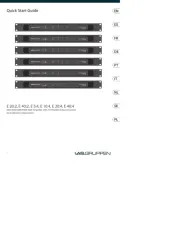
1 Oktober 2024
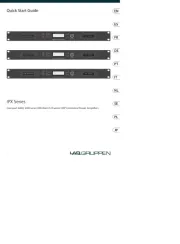
1 Oktober 2024
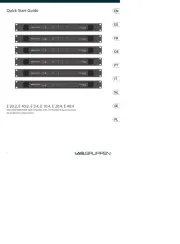
1 Oktober 2024

1 Juni 2024

29 Mei 2024

2 Oktober 2023

2 Oktober 2023

2 Oktober 2023

2 Oktober 2023

2 Oktober 2023
Handleiding Receiver
- Citronic
- Alpine
- Vivolink
- Sherwood
- Crunch
- Medeli
- Lindell Audio
- Pearstone
- EMOS
- Trust
- Douk Audio
- EQ-3
- Fredenstein
- PreSonus
- Marquant
Nieuwste handleidingen voor Receiver
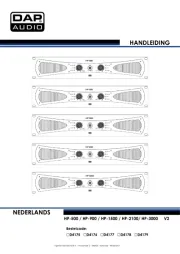
16 September 2025
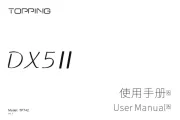
16 September 2025
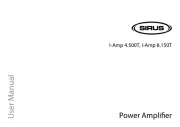
10 September 2025
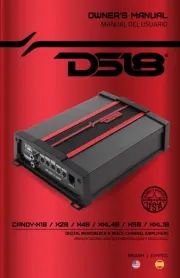
8 September 2025
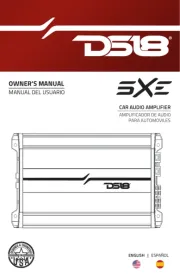
8 September 2025
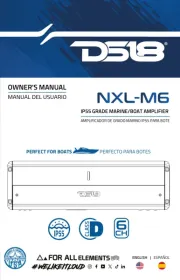
8 September 2025
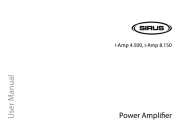
8 September 2025
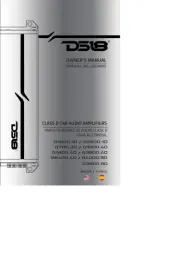
8 September 2025
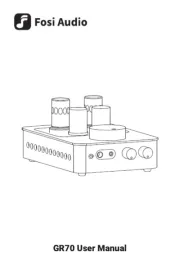
2 September 2025
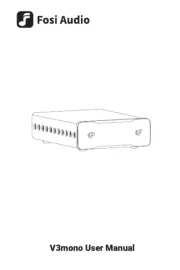
2 September 2025